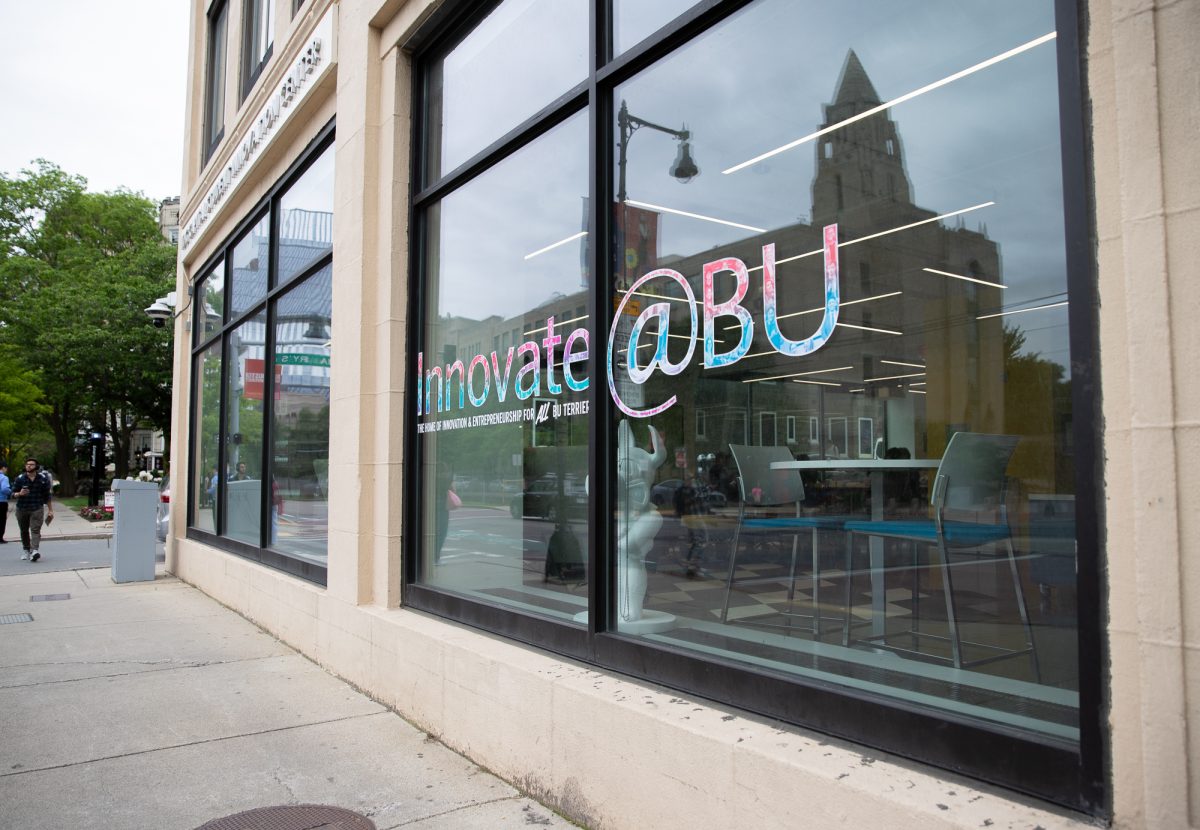Working as a reporter, Yolanda Vazquez “can sadly say that I was not living my life authentically as a Latina.” She said although she was proud of her roots, for some of her career Vazquez was encouraged to “Americanize” her name and dye her hair blonde, and was not allowed to wear vibrant colors or hoops on TV.

Vazquez — a Boston University College of Communication alumnus from 1992 and the External Affairs Director of the Office of the State’s Attorney for Howard County, Maryland — said that now, after 25 years, she is embracing her Latinidad at its fullest.
BU’s COM hosted a Zoom webinar last Wednesday called “It’s Our Time: Changing the Narrative of Latinx in Media” to speak about Latinx representation in the media.
Along with Vazquez, the panel of all BU COM alumni also featured publicist and Latinx culture consultant Johanna Calderón-Dakin, and Lucia Rodriguez, vice president of Cultural Insights and Marketing Strategy at Santiago Solutions Group. The event was moderated by 2020 alumnus Efraín F. Hernández Sánchez, a freelance journalist and podcast producer on the Sweaty Penguin.
When discussing the meaning of Latinidad, which refers to shared characteristics among Latinx peoples, Calderón-Dakin said at the event that it is a “complicated term.” She said even though people who come from Latin America or have Latin American roots have some characteristics in common, “there’s a lot of also differences within our culture.”
Later in the panel, Hernández Sánchez also emphasized the diversity within Latinx identities.
“It is very important to also remember that Latinos themselves can be of any sort of race. You see white Latinos, Black Latinos, Indigenous Latinos, Asian Latinos,” Hernández Sánchez said. “Latino is a very fluid word.”
However, that fluidity hasn’t been reflected in U.S. film and television, panelists discussed. According to the 2020 Hollywood Diversity Report from the University of California, Los Angeles, Latinx actors accounted for only 4.6% of top film roles in 2019.
However, Calderón-Dakin said she believes the lack of Latinx representation in the media is not the only problem. Latinx communities have to be mindful of how they portray the diversity within the community, Calderón-Dakin said.
On Spanish-language channels like Univision and Telemundo, “most of the people that are the anchors or in the telenovelas tend to be blue-eyed, white, and is that really what Mexico looks like?” Calderón-Dakin said at the event.
Vazquez mentioned BU alumnus Dolly Romero, who advocated for Latinx representation in the media while working on the Nickelodeon animated children’s series Dolly Romero
When the series was first created, Vazquez said, the character of Dora “was blonde, had blue-green eyes and was of pale complexion.” However, Romero fought for Dora to have a darker complexion and brown eyes, as well as speak Spanglish, since she was supposed to represent the Latinx population.
Ana María Reyes, a director of graduate studies and associate professor of Latin American art and architecture, said in an interview it’s “quite interesting” how race affects the representation of Hispanic and Latinx people in the media.
“When there is a representation of crime, it’s usually a reference to otherness, so very dark looking Latin Americans are usually criminals.” Reyes said. “When it’s a positive representation of a Latin American family or newscasters, they are closer to whiteness, so the racial politics of representing Latinos is again very problematic and follows the same higher racial hierarchy.”
Reyes said she has seen more recent interest in Afro-Latinos and Indigenous Latinos, as well as Latin American art in general. She said she feels “privileged to have this platform” because when she started her PhD, there were only two doctoral professors of Latin American art. Now they are “innumerable, and the art market is also very hot,” she added.
Angelica Rodriguez, a junior in the College of Arts and Sciences, said the media tends to sexualize Latinas, but she feels there has been progress in including Latinx people on screens.
Rodriguez said she wants “to be optimistic” about the progress made for Latinx representation in media.
“We have made a ton of progress in the last decades, but obviously, there is still work to be done,” Rodriguez said. “It’s cyclical, like a spiral. You make progress and then you go a little bit back, and then you continue. But it’s always moving forward.”























































































































